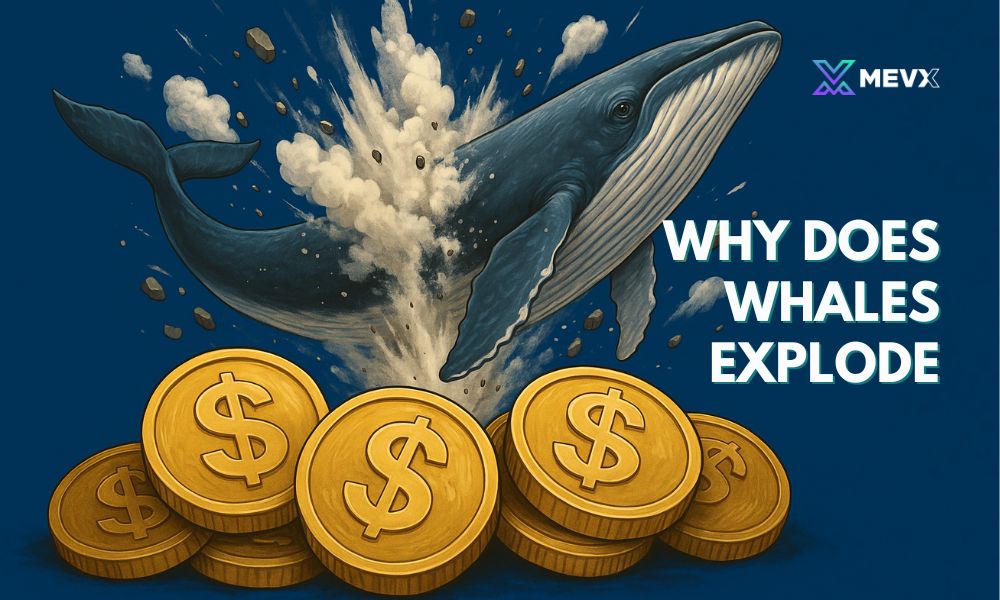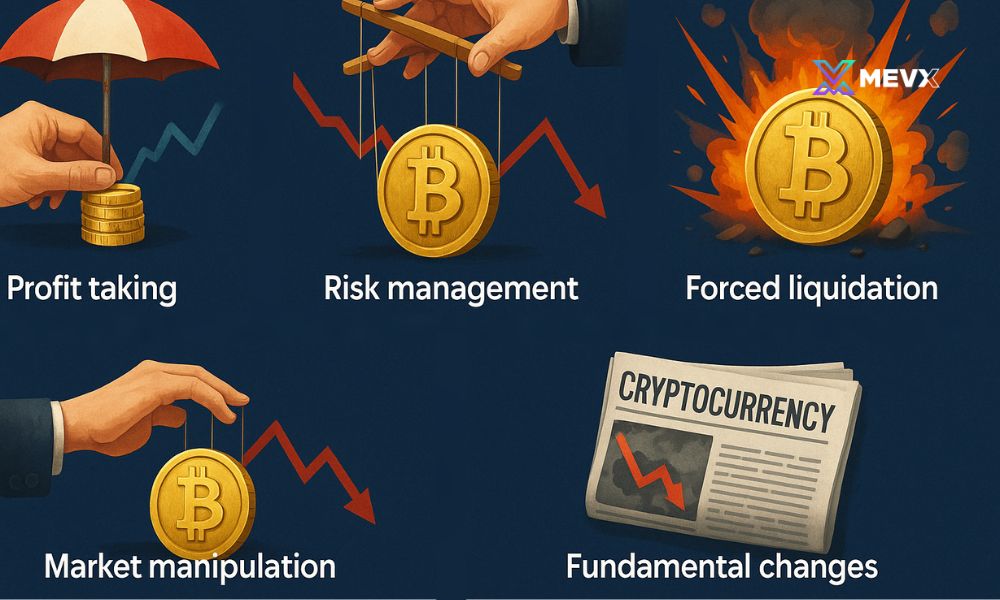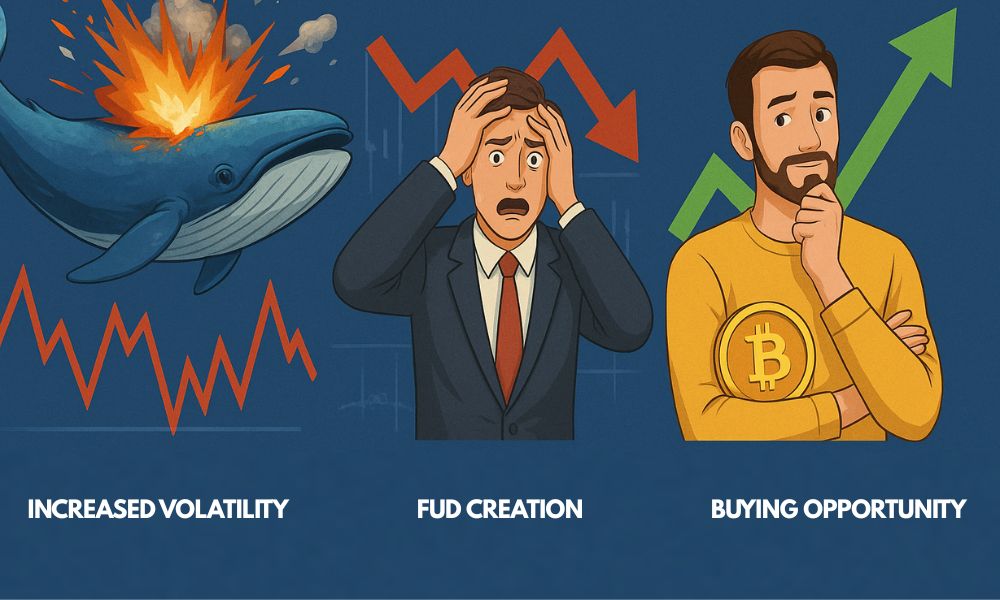Have you ever wondered why does whales explode within the dynamic cryptocurrency market? This phrase isn’t about giant sea creatures, but refers to large-scale investors suddenly selling off significant amounts of their coin holdings. This ‘explosion’ often leads to sharp price drops, creating significant market volatility. Understanding the underlying reasons is crucial for navigating the crypto space effectively.

What are crypto “whales”?
Before diving into why does whales explode, it’s essential to understand who “whales” are in the cryptocurrency world. This term describes individuals or entities holding a very large quantity of a specific cryptocurrency. Their holdings are substantial enough that their buying or selling actions can significantly influence the price and liquidity of that coin or token in the market.
For instance, someone holding tens of thousands of Bitcoin or millions of units of a particular altcoin would be considered a whale. Their activities are closely monitored by smaller retail investors because they can often signal upcoming market movements.
What does “explode” mean in crypto?
When the crypto community talks about why does whales explode, they aren’t referring to a literal physical explosion. Instead, “explode” is used metaphorically, typically signifying the act of dumping (selling off) a large volume of coins or tokens abruptly and massively. This action is like a bomb going off in the market, causing immediate consequences:
- Sharp price decline: The sudden influx of a huge supply overwhelms demand, causing the asset’s price to plummet.
- Widespread panic: Smaller investors witnessing the rapid price drop often engage in panic selling driven by fear, uncertainty, and doubt (FUD), further exacerbating the downturn.
- Liquidity fluctuations: Large sell orders can wipe out buy orders at nearby price levels on the order book, creating liquidity gaps and increasing price slippage for subsequent trades.
Although less common, “explode” could occasionally refer to a massive buying surge causing prices to skyrocket (a pump), but the context of “why does whales explode” predominantly relates to large sell-offs.
Key reasons why does whales explode
Several factors can trigger a crypto whale’s decision to sell off large portions of their holdings:
Profit taking: This is perhaps the most common reason. After a significant price appreciation period, whales may decide to realize their substantial profits. Having invested early or bought at lower prices, they sell when the market reaches a valuation they deem favorable or potentially peak.
Risk management: The crypto market is notoriously volatile. When whales perceive increased risks (e.g., negative regulatory news, macroeconomic concerns, security threats), they might reduce their holdings to protect their capital. Sometimes, it’s simply about portfolio diversification, moving funds into assets perceived as safer.
Market manipulation: Some whales might intentionally dump large amounts to create panic and drive the price down further. Their goal could be to buy back the same asset at a cheaper price later or to shake out weaker competitors (eliminate weak hands). Understanding this motive is part of understanding why does whales explode.
Forced liquidation: Many whales utilize leverage in their trading, especially on derivatives exchanges. If the market moves sharply against their leveraged positions, they can face margin calls. If they cannot add sufficient collateral, their positions are automatically closed (liquidated) by the exchange, resulting in an undesired, massive sell-off of their collateral assets into the market. This is a literal “explosion” of their position.
Fundamental changes: If significant negative news emerges regarding a project whose tokens a whale holds (e.g., the development team leaves, technology becomes obsolete, a major hack occurs, loss of faith in the long-term vision), they might decide to cut their losses and exit the investment entirely.
Personal liquidity needs: Sometimes, the reason is straightforward: whales simply need fiat currency for personal or other business ventures outside of crypto, forcing them to sell some of their digital assets.

The impact of whales exploding
Whale sell-offs can send major ripples through the market:
- Increased volatility: Massive sell orders instantly disrupt market equilibrium, causing prices to fluctuate wildly within very short timeframes. This heightened volatility increases risk and can lead to cascading liquidations for leveraged traders caught on the wrong side of the sudden move.
- FUD creation: The sudden, visible action of a whale dumping their holdings often triggers widespread fear, uncertainty, and doubt (FUD). Smaller investors, fearing the worst, may panic-sell without fully understanding the whale’s motive, further intensifying the downward price pressure.
- Buying opportunity: Conversely, for investors with a long-term perspective and confidence in the project’s fundamentals, understanding why does whales explode can reveal opportunities. If the sell-off isn’t due to project flaws, the resulting dip might represent an attractive, discounted entry point.

How to track whale activity?
While knowing a whale’s exact intentions is impossible, traders often use the following tools and methods to monitor their activities:
Blockchain explorers: These public ledgers allow anyone to view large transactions moving between wallets. Analyzing the flow of funds from known whale addresses to exchanges can signal potential sell-offs, providing valuable context even if the reason remains unclear.
Order book analysis: Observing exchange order books reveals large buy or sell “walls.” Identifying significant limit orders placed by whales can indicate potential support or resistance levels and hint at their short-term price intentions before a major move happens.
Volume tracking: Sudden, unusually high spikes in trading volume often accompany whale actions, whether buying or selling. Monitoring volume changes alongside price movements helps confirm if large players are actively participating and driving the market direction.
Whale alert services: Specialized platforms automatically monitor blockchains for significant transactions and notify users instantly. These alerts provide real-time awareness of large fund movements, which could precede major market shifts often associated with whale actions.
Understanding the patterns behind why does whales explode by using these tracking methods empowers investors. It provides deeper insight into market dynamics and the potential impact of large players, potentially leading to more informed trading decisions.
The question of why does whales explode in crypto primarily addresses the massive sell-offs initiated by large holders. These actions arise from diverse motivations, including profit-taking, risk management, market manipulation, or even forced liquidations, significantly impacting prices and overall market sentiment. Grasping these whale movements is a vital part of navigating the crypto landscape successfully. To automate strategies and keep pace with the latest developments, especially in the vibrant meme coin segment, consider following MEVX Trader for potential analyses and trading signals.
